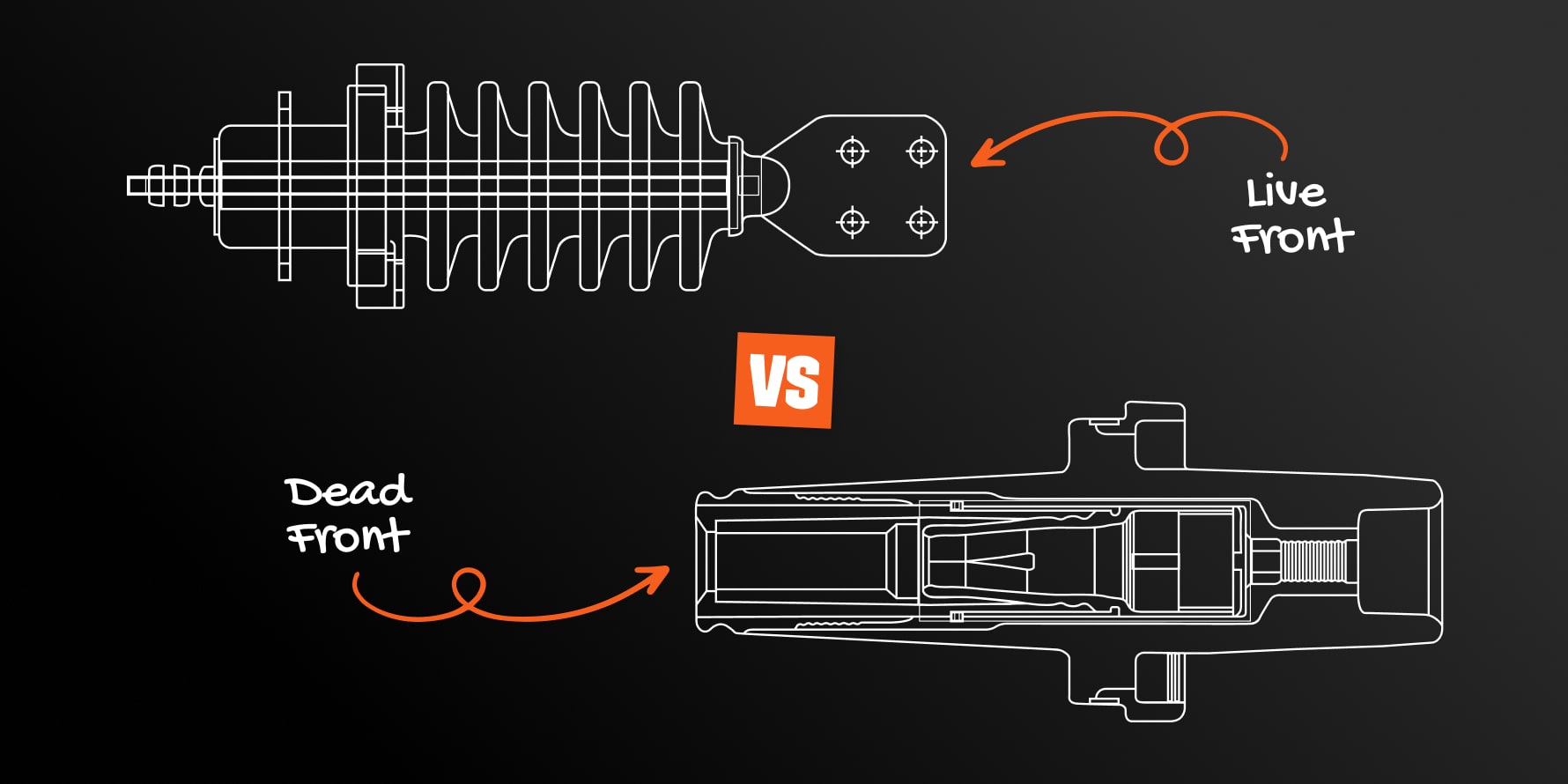The Live Front vs. Dead Front Bushing
A bushing allows a conductor to pass through the tank wall of a transformer without making electrical contact. Learn about live front and dead front bushings.
November 26, 2025
How To's
In this article, we’ll give you a quick rundown on the differences between live front bushings and dead front bushings. The main difference is straightforward. Live front bushings have exposed terminals, while dead front bushings are fully insulated.
Before we dive in, if you need to brush up on how transformers work, check out our comprehensive guide to electrical transformers.
What is a transformer bushing?
A transformer bushing is an insulator that allows a conductor to pass safely through the tank wall of a transformer without making electrical contact with it. Electrical current enters the transformer through the bushing. That bushing is an effective, insulated path for current to travel through.
Types of Transformer Bushings
There are two main types of transformer bushings: Live front and deadfront. Each serves the same purpose but uses very different approaches to insulation, safety, and maintenance.
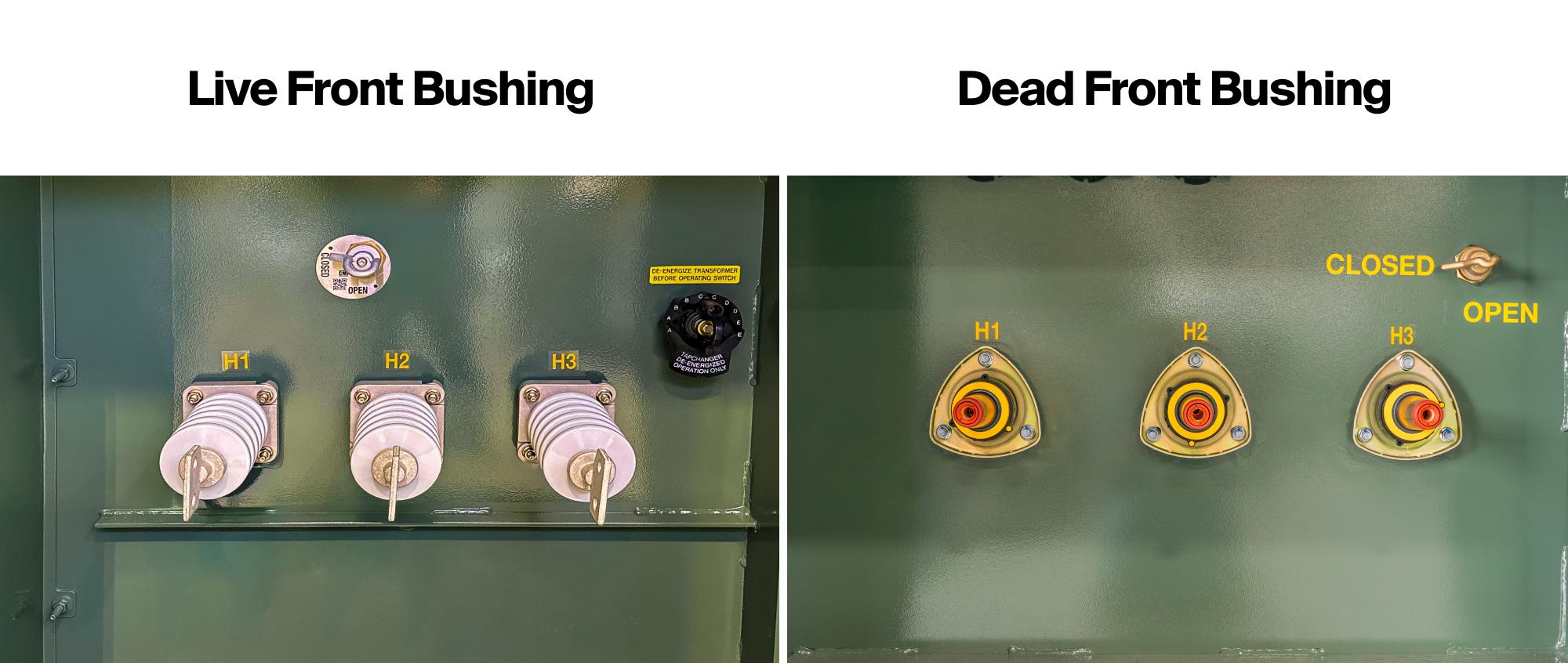
What is a live front bushing?
A live-front bushing is one in which part of the conductor or termination is exposed (i.e. “live”). Live just refers to the fact that the terminal is exposed. There is electricity flowing through it. Touching a live front bushing could result in electrocution. As a matter of fact, you don’t want to even get too close due to arc-flash concerns.
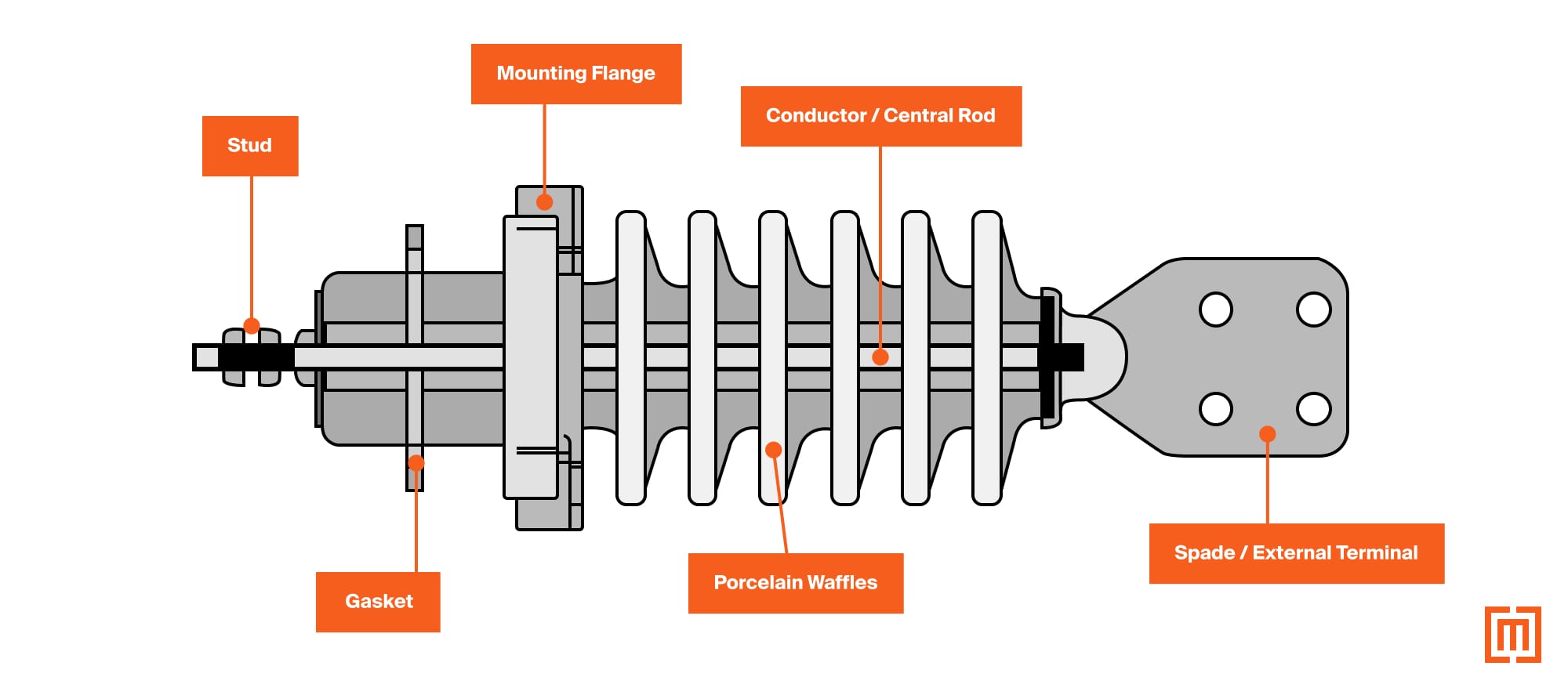
Parts of a transformer live front bushing
A live front bushing is made up of several components. Here are the main ones:
Conductor / Central Rod
The central rod is the main current-carrying element running through the center of the bushing. It’s usually made of copper or aluminum. The internal winding is connected to the external terminal via this central rod.
Spade / External Terminal
The spade is at the end of the bushing. This is where the actual termination is made. Cables or jumpers are connected to the spade with a mechanical lug or a crimp lug.
Insulating Body & Waffles
Below the spade is the insulating body, usually made of porcelain or epoxy. The body is shaped with little ridges called waffles or sheds. These waffles help protect against something called creep. Creep is where a tiny arc travels across a surface area by “creeping” along with some small amount of water, dust, or oil. Waffles provide the necessary clearance to prevent creep by providing a larger amount of surface area.
Mounting Flange / Gasket Assembly
The mounting flange and gasket assembly secure the bushing to the transformer tank and seal the oil compartment. This prevents leaks and helps to maintain the internal pressure integrity.
Gaskets and Seals
Rubber or synthetic gaskets provide a seal between the bushing and the tank. When these seals fail, oil can leak from the tank.
Stud
Finally, there is a stud where the bushing internally connects to the transformer core and windings.
What is a dead front bushing?
Dead front bushings are fully insulated bushings that don’t have a “live” surface of the bushing exposed.
These do the exact same thing as live front bushings. The difference is that they are fully rubber-insulated. The obvious benefit is that you can open the cabinet and there is a lower risk of arc-flash.
Most padmount transformers have dead front bushings on the primary side, but live front on the secondary side.
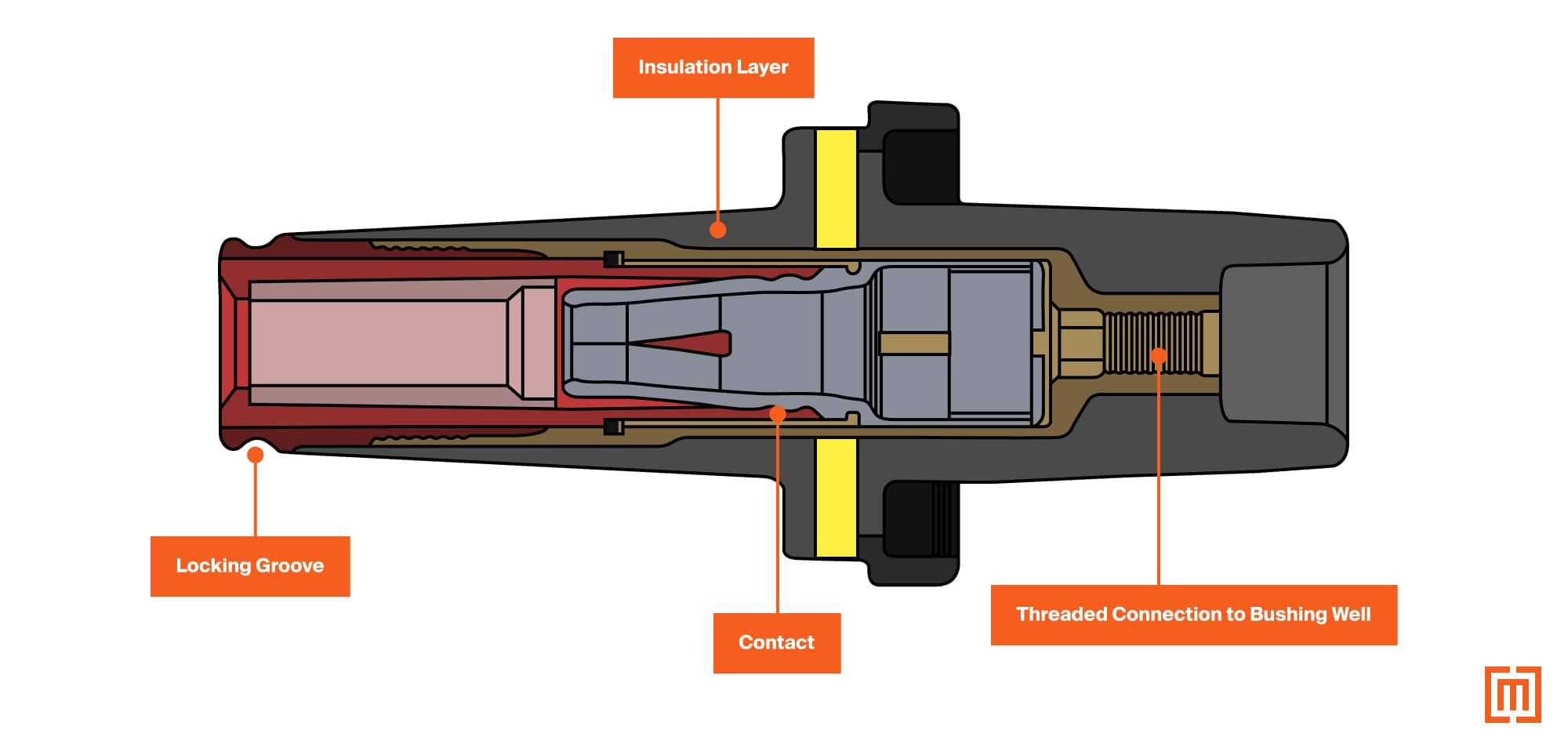
Parts of a transformer dead front bushing
Dead front bushings have a few more parts than live front bushings.
Load Break Elbow
For dead front bushings 200A and below, the fully rubber dead front bushing is terminated using a load break elbow. The transformer cables connect to this elbow. The dead front bushing interface has a groove at its end onto which the elbow locks, making for a secure connection. To break this connection, the utility (or other qualified personnel) uses a hot stick to pull the elbow off the bushing insert.

Dead Break Elbow
Above 200A, dead front bushings must be switched off upwind of the HV cables. These are called 600A “dead break” bushings. Unlike the load break interface, the dead break does not allow the load to be broken at the bushing.

For more information on Dead Break vs. Load Break bushings, see this video:
Bushing Insert
The elbow connects to the bushing insert, which is a mating surface for the elbow. The insert has a layer of fully-insulated rubber. Inside this layer is the contact, which provides a path for current to flow from the transformer to the terminal.

Bushing Well
For 200A bushing inserts, the insert connects to a bushing well, installed in the transformer tank wall. The bushing well mates with the bushing insert via a threaded connection point in the insert. The insert and well are combined into a single piece on 600A dead break bushings.
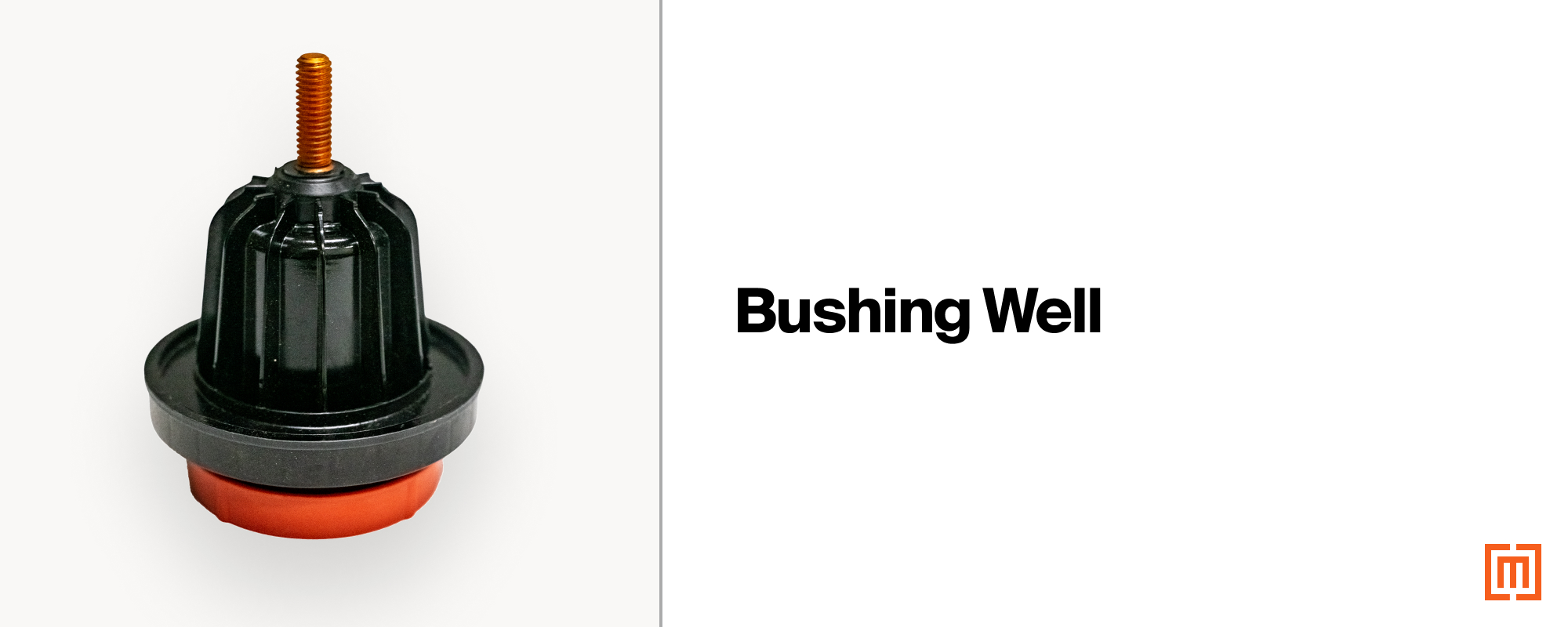
Live Front vs. Dead Front Bushings
Live front and dead front bushings perform the same function. However, they are generally used in particular applications.
Dead Front Bushing Application
Due to the higher voltages on the utility side, primary/HV bushings are often the dead front type. The fully insulated dead front design limits exposure to higher voltages and reduces the risk of arc flash for utility workers and other qualified persons accessing the HV cabinet while the transformer is energized.
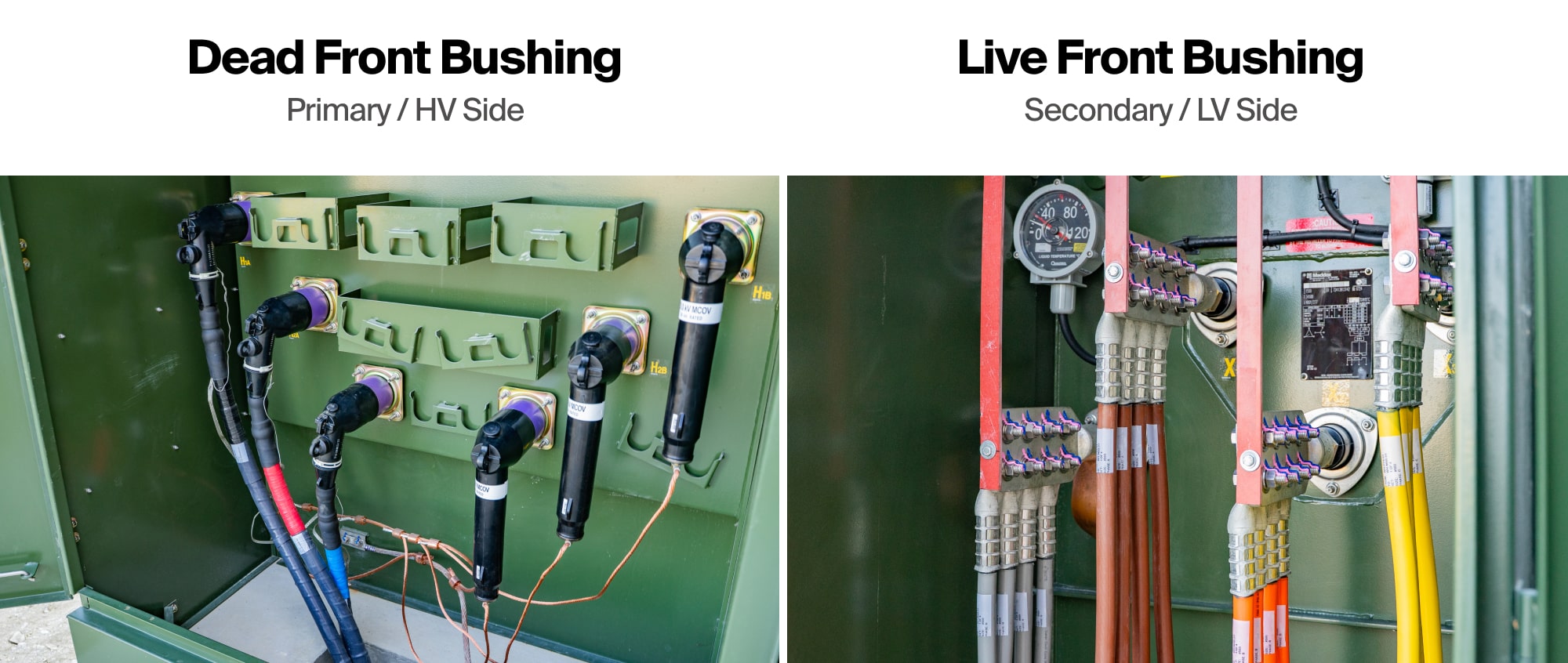
Live Front Bushing Application
Because the dead front interface typically allows only one cable connection per elbow connector, it is uncommon to see it used for transformer secondary/LV terminations (where multiple cables are landed on each phase).
Live front bushings are also common on substations and polemounts. Live front bushings are also common on substations and polemounts. Check out this video for a rundown of the differences between live front and dead front bushings:
Conclusion
Maddox stocks thousands of transformers with whatever combination of bushings you need. If you have more questions about bushings, fill out the form below. We’ll get you the info you need!

